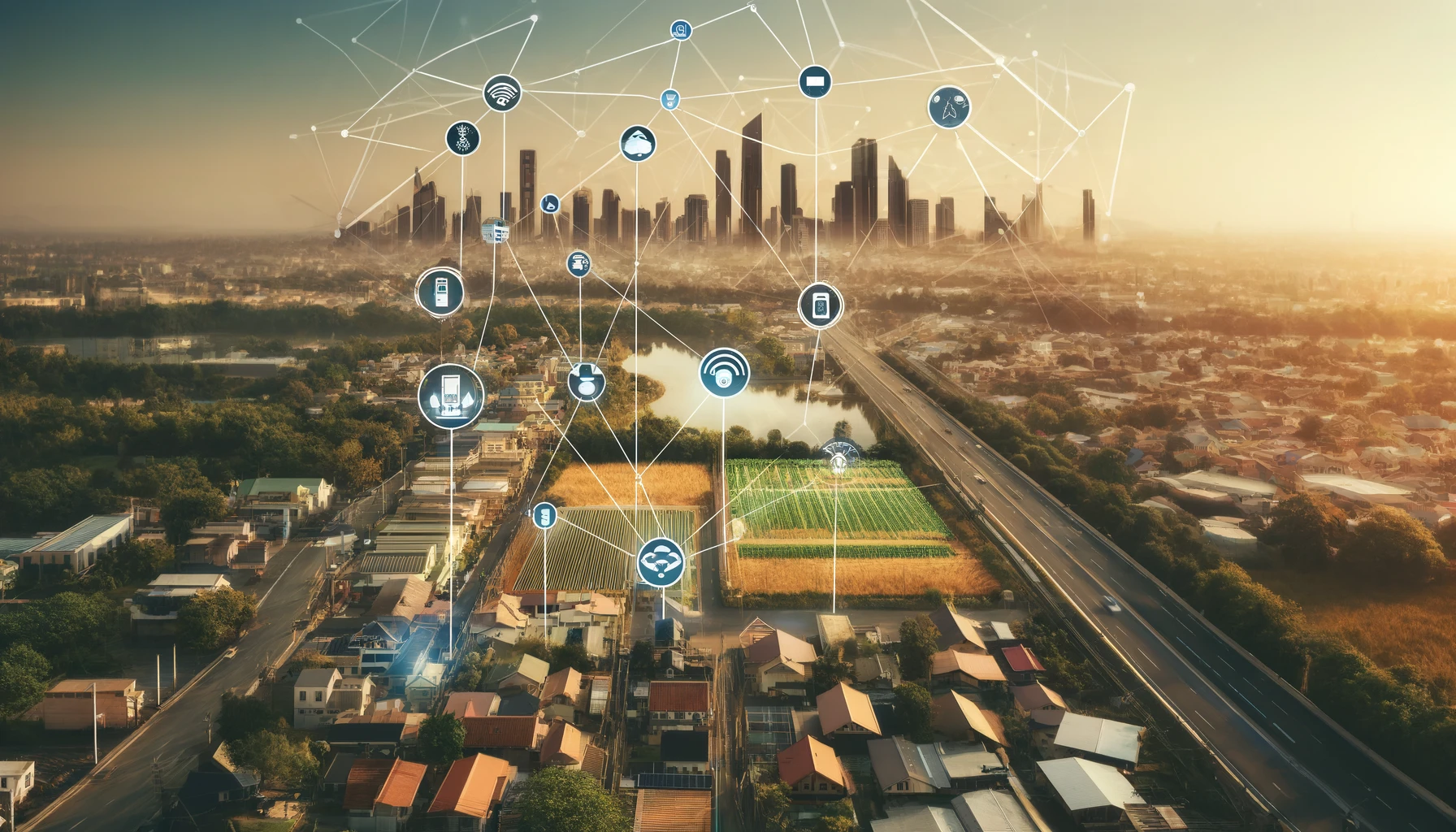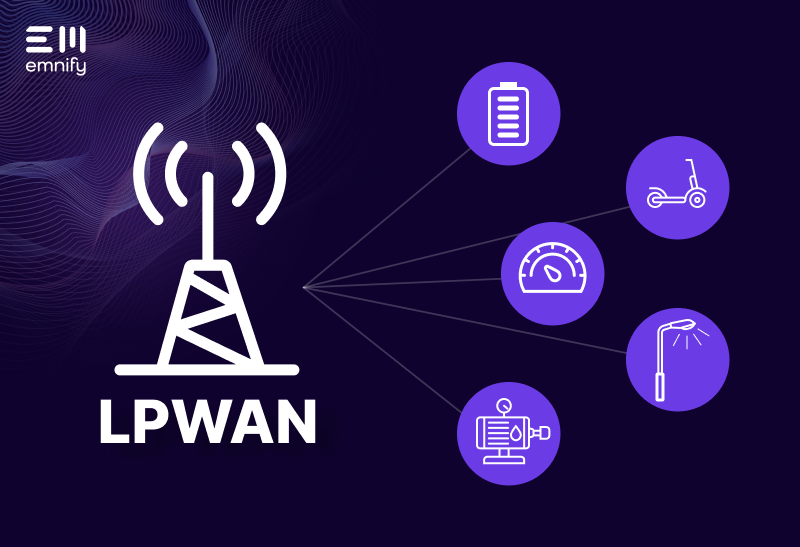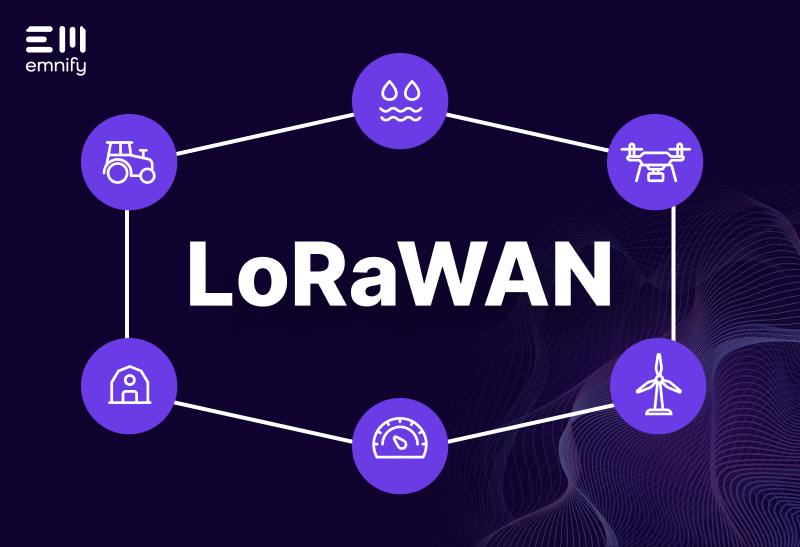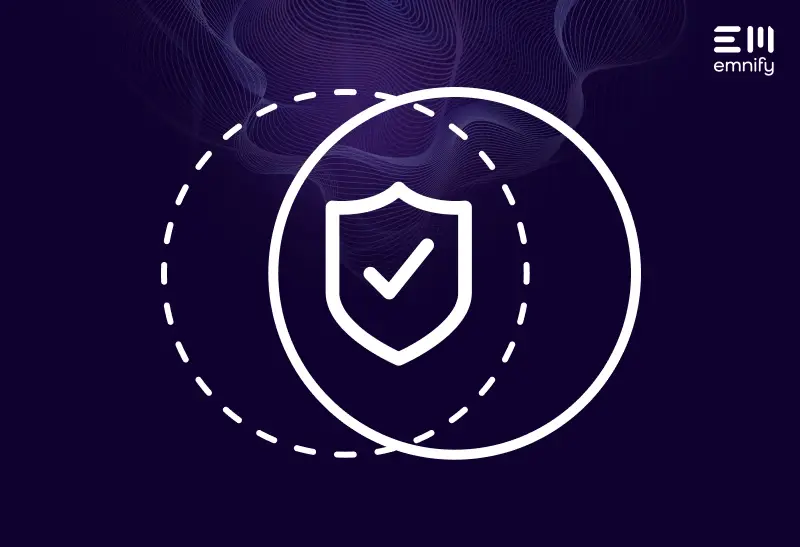

Quick definition: LPWA IoT uses Low Power Wide Area Networks (LPWANs) to connect Internet of Things (IoT) devices more efficiently than other network types in remote locations where traditional radio access types may struggle to offer coverage. It trades lower data transfer rates for reduced power consumption, and greater signal penetration to enable sensors in remote locations to operate wirelessly for years at a time. That said, the availability of LPWAN coverage today is generally less extensive than traditional 2G/4G networks.
Table of contents
- Low power consumption
- Wider coverage area
- Excellent signal penetration
- Leverage LPWA IoT with emnify
In short, while IoT devices can use a wide range of connectivity solutions, many of the most popular connectivity technologies weren’t designed for IoT. They were created for cell phones, computers, electricity, and specialized use cases. As a result, they often use too much power, have more data throughput than necessary, are prone to interference, or don’t work well in remote applications.
That is where LPWA IoT comes in.
Several types of LPWA technologies exist, including cellular and non-cellular solutions. The most well-known of these solutions are NB-IoT, LTE-M, LoRaWAN, and Sigfox. Sometimes referred to as mobile IoT, LPWA IoT has opened the door to new and more efficient IoT applications.
While there are significant differences between the various LPWA IoT solutions, they each address the problems other types of connectivity have presented for IoT and provide similar benefits.
In this article, we’ll look at the main advantages of LPWA IoT and discuss why this group of technologies is so vital to the future of connectivity.
Low power consumption
IoT devices are often designed to operate in the field without a hardwired power supply. Whether IoT devices need to be retrofitted to legacy equipment, deployed in isolated environments, or moved easily from one location to another, a hardwired connection limits their versatility and marketability. Instead, the trend in most IoT industries is toward smaller devices with longer battery life. Since larger batteries would last longer but inhibit a manufacturer’s ability to make their devices smaller, more efficient connectivity is a major competitive advantage.
LPWA IoT uses a number of methods to reduce power consumption. Some LPWANs like NB-IoT and LTE-M have power saving features—one of which is aptly named Power Saving Mode (PSM)—which help them use power more efficiently when the device isn’t transmitting or receiving data.
However, LPWANs have significantly less data throughput than traditional cellular networks like 3G and 4G, which means they also use less power when transmitting or receiving. It's important to note that LTE-M and NB-IoT typically have higher data throughput compared to other IoT-specific technologies like Bluetooth and Zigbee.
The tradeoff is that they must transmit/receive for longer, but it’s still more efficient when your data packets are small. It’s like taking a walk to visit someone a block away versus making the trip in a sports car—all that speed and power is just overkill. Most IoT devices don’t use enough data to need significant throughput.
Wider coverage area
Every connectivity solution provides coverage within a fixed range of its network infrastructure. Ethernet requires hardwired connections. WiFi only works within about 150 feet of a router, depending on interference.
One of the key advantages of LPWA IoT networks is that they provide coverage over a wide area, reducing limitations on where your devices can deploy.
LTE-M and NB-IoT are both cellular solutions, which means your devices simply need to connect to existing network infrastructure. Both can leverage existing 4G infrastructure, though LTE-M boasts better coverage for now. While both technologies have been standardized for satellite IoT, most vendors are starting with NB-IoT, so it will be globally available soon.
Some popular LPWA IoT solutions like Sigfox don’t have global coverage, but you can build your own infrastructure even in remote locations to get the coverage you need. This is usually how it works with LoRaWAN vendors as well, but some are beginning to use satellite IoT to deliver global coverage.
Excellent signal penetration
Buildings, forests, mountains, and radio frequency signals can easily interfere with IoT communications. This can be especially problematic for indoor or underground IoT devices, remote deployments, and environments where connected devices are densely crowded (such as a city).
However, LPWA IoT greatly reduces the degree to which these obstacles interfere with your transmissions. LTE-M, NB-IoT, Sigfox, and LoRaWAN all have a significantly higher Maximum Coupling Loss (MCL) than other network types, which means their signals penetrate indoors better and can tolerate more interference from other transmissions.
Leverage LPWA IoT with emnify
When your application doesn’t involve data-intensive processes and you need good coverage, LPWANs are often one of the best approaches to connectivity.
And when you develop an LPWA IoT solution with emnify, you’ll get simple, scalable connectivity. The emnify SuperNetwork is a single, distributed service with access to hundreds of networks in over 180 countries, including satellite, for uninterrupted connectivity around the globe. Plus, with our extensive roaming agreements, we have the largest LTE-M coverage on the market.
Want to see what emnify can do for you?
Talk to an IoT expert today, or start a free trial. We’ll send you two free test SIMs with prepaid data plans and 60 days of complete access to our platform, so you can fully experience our LPWA capabilities.
Get fresh insights delivered straight to your inbox
Don't miss out on the latest industry trends, best practices, and insider tips for your marketing campaigns.

With a career spanning over 18 years in storytelling and content creation, Bronwyn translates technical concepts and ideas into snackable and easy-to-digest content.



